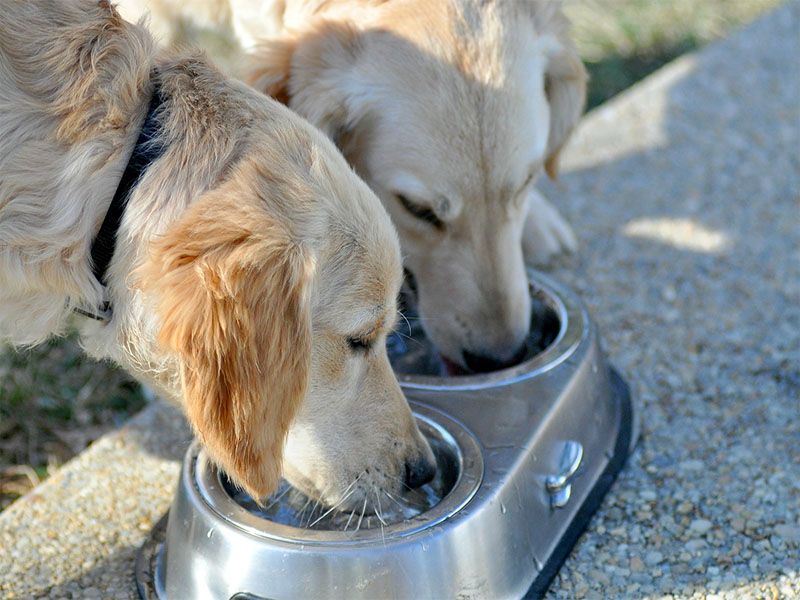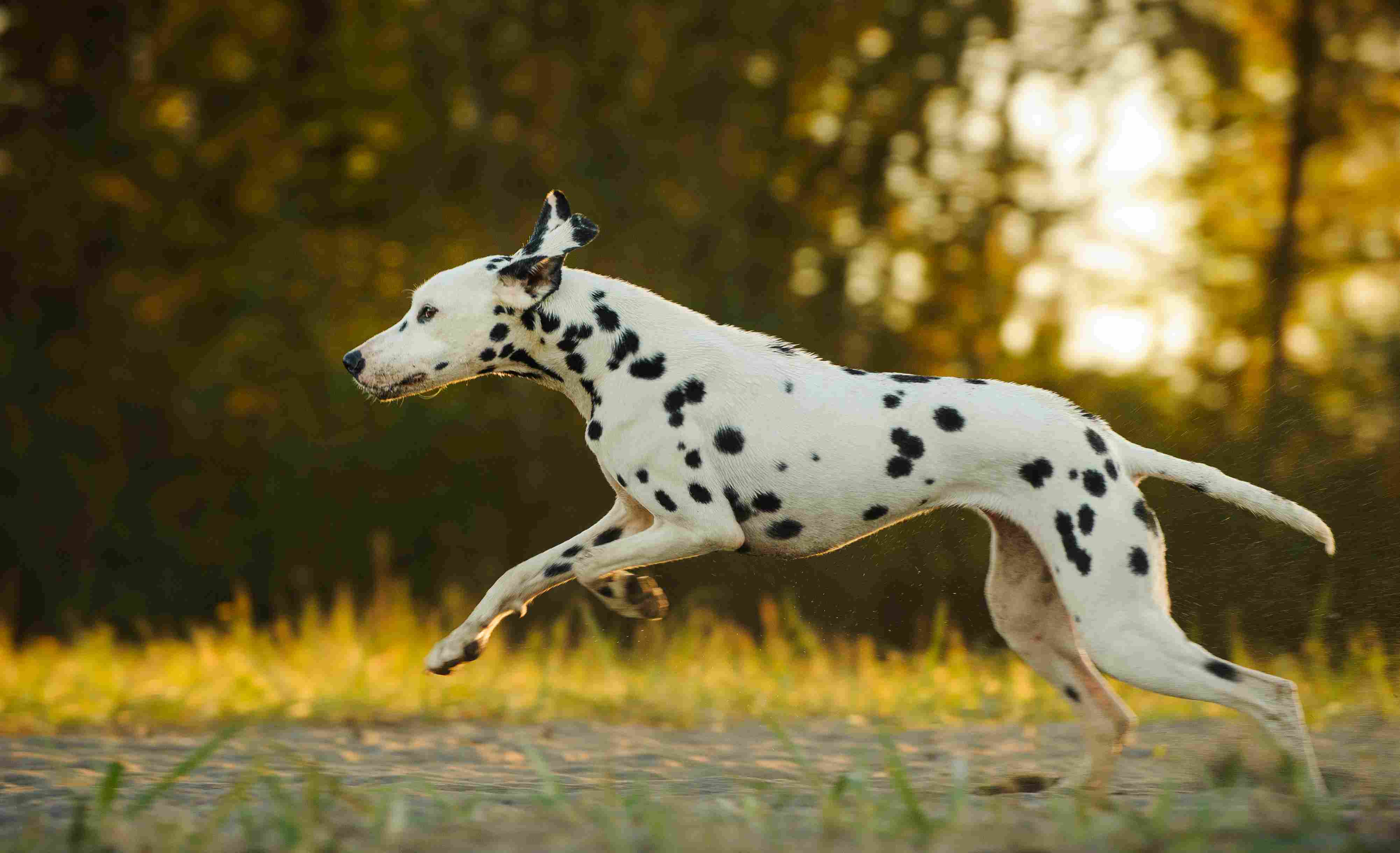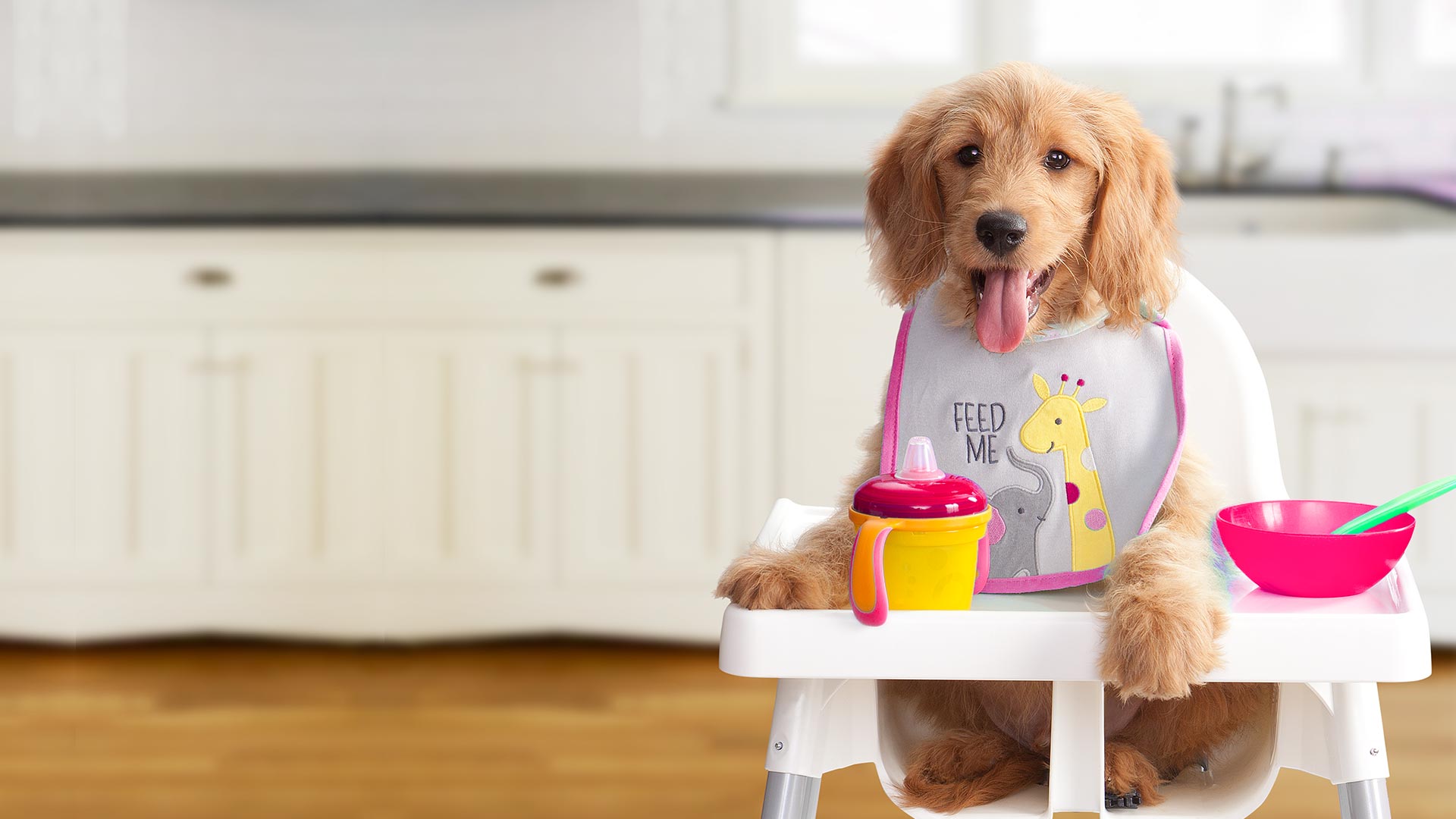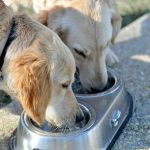Dogs & Water
Slurp! Slurp!
How Much Water Does My Dog Need?
Happy Summer Everybody! This is the best time of the year to enjoy the outdoors with your best friend. Whether you and your four-legged buddy like long walks or playful jaunts in the dog park, proper hydration is especially important as the temperature rises and the activity increases. This is a good time to take stock of how much water your dog consumes.
Why Water?
It may surprise you to learn that while most dogs instinctively know to drink just the right amount of water for their needs, some dogs simply don’t. So it’s very possible your own canine is could be under or over hydrated.
A good quality diet is an important aspect of keeping your dog healthy. Water, however, is the main component to maintain healthy cells in the body. Without water, your dog’s body will not be able to function properly. Water lubricates and cushions joints and makes movement easier. It also serves to cool the body down and works to maintain a normal body temperature, especially important in the warm season.
How Much Water?
According to Dr. Karen Becker, a Holistic Veterinarian, educated at the Iowa State, School of Veterinary Medicine, your dog should drink between ½ to 1oz. of water per pound of body weight each day. How much water your dog needs each day depends on several factors, including
the dog’s food source, level of activity, outdoor temperature, size and age.
‘Jersey’, my little golden doodle mix, weighs 26 lbs, gets moderate exercise, ( I know I should walk with her more) and has a mix of wet and dry dog food. She should be getting around 16 ounces of water per day.
Always keep your dog’s bowl filled with fresh, clean water. You may even want to have water available in a few areas of your home, just to make sure your dog has easy access.
It’s also very important to provide clean fresh water for your pet when you are away from home. Travel dog bowls are a great way to bring food and water. Always keep one in the car or luggage so that your dog can have water when needed.
I don’t suggest having your dog drink from the ‘public’ bowls merchants leave by their doors. They may signal that the store is pet friendly, but the water may not be fresh, the bowl may not be clean and it may be filled with bacteria that could cause illness in your pet. Often the wait staff a your favorite sidewalk café will provide a dish of fresh water for your pet.
Oops – Too Little/Too Much
Dehydration – To determine if your dog may need more water, lift some skin at the back of their neck and let it go. If your dog is well hydrated, the skin will fall quickly back into place. The skin of a dehydrated dog will fall more slowly and form sort of a tent. Another method is to check your dog’s gums. Moist, slick gums indicate a good level of hydration; dry or sticky gums mean your pet’s body needs more water.
To encourage your dog to drink more water, offer praise and maybe a treat whenever they drink from their water bowl., You can add yummy flavorings like chicken or bone broth to your dog’s water to make it more tempting.
If you have a new puppy this summer, take special care to monitor and encourage hydration. Their water consumption needs to be closely monitored, giving them small amounts of water every few hours.
Water Intoxication – Yea, that’s a thing. After a period of hard play or exercise, use caution when your dog rehydrates. If the dog immediately laps up the contents of the water bowl, rest him for a bit before you refill the bowl. If your dog is very active, it’s a good idea to have water with you when they exercise so that you can provide frequent short water breaks to maintain hydration.
Monitor your dog’s appearance and behavior when he’s playing in water. Be vigilant if your dog enjoys being sprayed with water from the hose or sprinkler. A hose or sprinkler is under pressure can cause the dog to ingest a large amount of water in a short amount of time.
If a dog ingests too much water too quickly, this may cause them to vomit. More distress for the dog and for you.
If you are not at home during the day and have to rely on a dog walker to your dog get exercise and relief, make sure they also monitor water consumption. Have the dog walker reward your pet with a fresh bowl of water and maybe a treat after each walk.
What kind of water
A good general rule is to give your dog the same water you drink. If you are comfortable drinking the tap water then give your dog tap water.
While most people automatically assume that bottled water is better, this may not necessarily be true. Bottlers often derive their water from the same municipal water source that comes from your tap, they just use different water treatment processes. So tap water in most cases is perfectly fine for your dog. However, in some parts of the country, not only does the bottled water taste better, but it can actually be healthier. So use your judgement and taste buds.
When out playing with your dog in the park or beach be mindful to not
let your pet drink from the stagnant water, salt water, or really any water you
would not drink yourself.
Almost done!
So let you dog get plenty of slurps. If you are concerned that your dog is not getting enough water, talk to your veterinarian for advice. Changes in your dog’s drinking habits, not related to activity may be an indicator of an underlying illness. Maintaining proper hydration is too important to your dog’s health to ignore.
Sources – Pet MD, Web MD, Healthypets.mercola.com, Banfield.com, Whole Dog Journal











Recent Comments